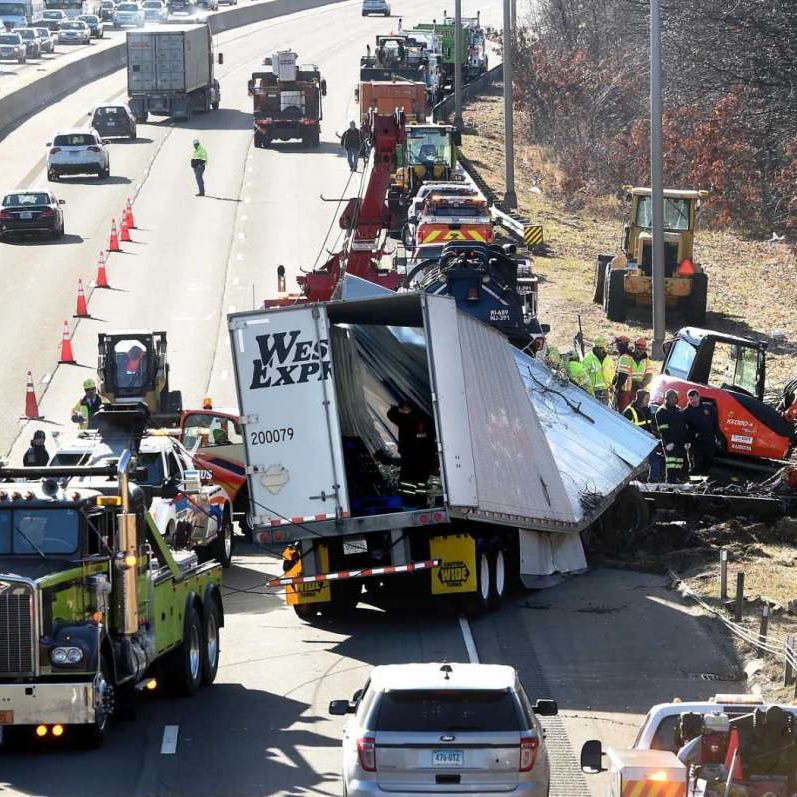Overview
The Federal Highway Administration defines Transportation Systems Management and Operations (TSM&O) as “an integrated program to optimize the performance of existing multimodal infrastructure through implementation of systems, services, and projects to preserve capacity and improve the security, safety, and reliability of our transportation system.” In this context, CRCOG strides on measuring performance, actively managing the multimodal transportation network, and delivering positive safety and mobility outcomes to the public. Transportation System Operations and Management is an integral part of CRCOG’s transportation planning process.
Major activities and efforts at CRCOG include Congestion Management, Incident Management and Intelligent Transportation System planning which are further explained below.
Congestion Management
A Congestion Management Process (CMP) is a systematic approach to measuring transportation system performance and developing proposals to manage traffic congestion. Metropolitan areas with a population over 200,000 are required to develop and implement a CMP as part of the metropolitan planning process.
The major function of the CMP is to enable the MPO to implement regional management and operations strategies by identifying and addressing congestion in the region. CRCOG developed the first Hartford Transportation Management Area (TMA) CMP report in 2005. The report was updated in 2010, 2015 and the most recent was completed in November, 2020. The 2015 and 2020 update utilized travel data provided by FHWA NPMRDS program respectively. All four documents can be found below:
Intelligent Transportation Systems
Intelligent Transportation System (ITS) means electronics, communications, or information processing used singly or in combination to improve the efficiency or safety of a surface transportation system (FHWA). ITS utilizes advanced applications which aim to provide innovative services relating to different modes of transport and traffic management and enable various users to be better informed and make safer, more coordinated, and ‘smarter’ use of transport networks. CRCOG coordinates with the Connecticut Department of Transportation (CTDOT) and adjacent MPOs to conduct ITS planning throughout the region. A few of the key ITS documents are summarized below:
Capitol Region Intelligent Transportation System (ITS) Strategic Plan
The ITS Strategic Plan was developed as an update to the 1997 ITS plan. Stakeholders included municipal staff, emergency responders, transit operators, adjacent regional planning organizations and CTDOT highway and transit planning and operations staff. The Plan includes five goals designed to improve the operation of transportation systems through the use of technology, along with objectives and strategies to reach those goals.
Traffic Signals Operation and Maintenance Guidelines Handbook (Draft)
The Traffic Signal Systems handbook was developed in part as a response to the 2012 FHWA Local Agency Traffic Signal Operations and Maintenance Program Review that identified concerns regarding the local agency traffic signal project development and eventual operation and maintenance. The handbook will assist local agencies follow the systems engineering process to develop project proposals and to assure that funded projects will be adequately operated and maintained over the life cycle of the equipment.
Statewide Computerized Traffic Signal Systems Needs Assessment
CTDOT completed a Statewide Computerized Traffic Signal Systems (CTSS) Needs Assessment in November 2015. The report identifies general CTSS needs, as well as specific needs in seven of the state’s nine regions. The report can be accessed in the above by clicking on the title, a PDF of the appendices file can be found here: Appendices
ITS Architecture
The ITS Architecture is a framework for how ITS solutions are interrelated, and how information is exchanged within an area/region. After April 2005, any transportation project with an ITS component is required to conform to the regional ITS Architecture. Area stakeholders including representatives from emergency response agencies, municipal public works department, area transit systems, and others have worked with the Department of Transportation and their consultant to develop an Architecture that accurately reflects the existing and proposed ITS systems in the greater Hartford area.
Please feel free to explore the Hartford Area Regional ITS Architecture by linking to its website. (If you get a pop-up asking for a password, simply close out of the pop-up box by clicking on the x in the upper righthand corner.) If you have specific comments about the architecture, there is a Send Us Your Comments link on the home page of that website.
ADA Self Evaluations and Transition Plans
Per Federal guidance (28 CFR §35.150(d)), all municipalities that employ 50 or more persons must develop an Americans with Disabilities Act (ADA) Transition Plan to outline steps and a schedule for making sidewalks, crosswalks, and public walkways accessible to persons with disabilities. The first step in developing such a plan is to perform a Self Evaluation to identify physical obstacles that limit the accessibility of individuals with disabilities.
The following are some resources related to ADA Self Evaluations and Transition Plans:
- FHWA Questions and Answers About ADA/Section 504
- CTDOT’s Statewide ADA Transition Plan
- Examples of municipal ADA Transition Plans
If you need assistance or have questions about developing an ADA Self Evaluation and Transition Plan, please contact:
Melissa Evans, Safety Circuit Rider
UCONN’s Technology Transfer (T2) Center
(860) 486-5847
Email
Cara Radzins, Principal Transit Planner
CRCOG
(860) 724-4251
Email
Traffic Incident Management

The Capitol Region Council of Governments administers the Greater Hartford Traffic Incident Management (TIM) Coalition that includes both public and private stakeholders. The Coalition acts as a steering committee overseeing a regional TIM program within the Hartford Urbanized Area. The program strives to strengthen the role of the responder community, increase the safety for motorized and non-motorized users, and promote efficient transportation system management and operation along the state’s highway system.


